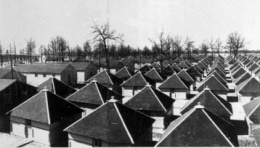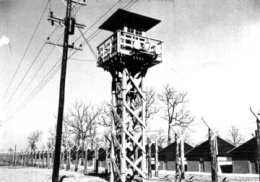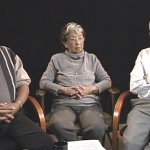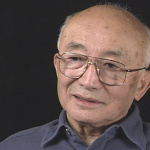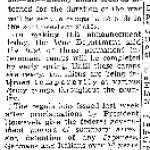Camp Forrest (detention facility)
| US Gov Name | Camp Forrest Internment Camp |
|---|---|
| Facility Type | U.S. Army Internment Camp |
| Administrative Agency | U.S. Army |
| Location | Tullahoma, Tennessee (35.3500 lat, -86.2000 lng) |
| Date Opened | |
| Date Closed | |
| Population Description | Held Japanese immigrants from the Hawai'i; also held German and possibly Italian nationals. |
| General Description | U.S. Army internment camp located in a wooded area of rural Tennessee, 70 miles south of Nashville. |
| Peak Population | 190 (May-June 1942) |
| National Park Service Info | |
A large army training facility during World War II, Camp Forrest, Tennessee, also had an internment/POW camp that operated from mid-1942. A group of around 190 Japanese American internees from Hawai'i spent about a month at this camp in May and June of 1942. The camp also held up to 700 German American internees, as well and German (and possibly Italian) POWs.
Camp Forrest was named after General Nathan Bedford Forrest, a confederate general in the Civil War and covered some 85,000 acres about two miles outside of Tullahoma, a town in Coffee County, Tennessee, and about seventy miles south of Nashville. A large training facility for various army units, the presence of the base led to Tullahoma's population growing from 4,500 in 1940 to 75,000 by the end of the war. [1]
The internment camp area was far from the army camp and located "in the middle of a forest on a plateau" according to Issei internee Kumaji Furuya. Internees were housed in five man wooden huts with cement floors that Furuya described as "poorly constructed, with many gaps in the walls." Another internee, Nisei physician Kazuo Miyamoto, described them as being like "temporary, inexpensive beach huts." Makeshift windows were simply holes cut into the wooden walls, with the cutout pieces serving as "shutters." The huts did little to keep out the rain from the frequent summer electrical storms, and the camp was frequently flooded due to the clay soil that didn't absorb water. The huts were laid out in rows of ten which faced another ten across a gravel walkway that led to communal showers and latrines on one end and the mess hall and kitchen on the other. Miyamoto describes the latrine as lacking privacy since "passersby on the outside could peep in and see what was taking place." Furuya wrote that the internees had to walk along a long way on the gravel walkway up a hill to get to the mess hall. Day was hot and humid, and frogs and cicadas kept internees awake at night. Nonetheless, Furuya recalled Camp Forrest favorably relative to other internment camps, given its separation from the army camp and its forest location. [2]
Most of the roughly 190 Japanese American internees at Camp Forrest consisted of Japanese Americans from Hawai'i who made up the first group to be transferred to the continental U.S. These 172 men had traveled on the U.S. Grant in February 1942 and had spent time at Angel Island , California, and Camp McCoy , Wisconsin, before arriving at Camp Forrest on about May 28. The Japanese group seemed to also include a few others from other parts of the U.S.; Furuya recalled encountering five Japanese internees from Miami upon arrival and later refers to a cook from St. Louis. There were also German and Italian internees who were separately housed, though Miyamoto wrote that "the races were free to mingle." After about a month, most of the Japanese left on June 29 for Camp Livingston , Louisiana. Around a dozen had left a few days earlier to be among those sailing for Japan on the first voyage of the Gripsholm . Most of these were Japanese nationals, with just a couple being Hawai'i internees. In November 1942, about 600 German internees transferred to Camp Forrest from Fort Meade . Later, after German POWs from North Africa began to arrive in early 1943, the internees were moved to INS camps in May 1943, most to Fort Lincoln, some with families to Seagoville or Crystal City . [3]
Inmates slept on army cots that had been used by the CCC with no clean linens provided; Furuya recalled that "the filth and the smell were overwhelming." On the other hand, he reported that the "food was good" and medical facilities "well equipped." Internees elected representatives, most of whom were the same as those elected at Camp McCoy, their prior stop. Some internees began to offer classes in English and other subjects, with the YMCA providing books. Movies were also shown in an outdoor clearing against the forest backdrop. Many internees also collected stones and fossils in the forest, which they polished and made into decorative objects. Though the physical setting was an improvement over other internment camps, Furuya wrote that the constant movement the Hawai'i group had been subjected to "seemed to trigger a new round of irritation among us." [4]
After the war, Camp Forrest was declared "surplus property" and the buildings and infrastructure were sold or salvaged. The area was later selected as a site for the Air Engineering Development Center of the Air Force and dedicated in 1951 as Arnold Engineering Development Center. The AEDC remains today and claims to have "the most advanced and largest complex of flight simulation test facilities in the world...." [5]
For More Information
Suikei, Furuya. An Internment Odyssey: Haisho Tenten . Translated by Tatsumi Hayashi. Foreword by Gary Y. Okihiro. Introduction by Brian Niiya and Sheila Chun. Honolulu: Japanese Cultural Center of Hawai'i, 2017.
Miyamoto, Kazuo. Hawaii: End of the Rainbow . Rutland, Vermont: Charles E. Tuttle Company, Inc., 1964.
Footnotes
- ↑ "Camp Forrest," AEDC [Arnold Engineering Development Center, Arnold Air Force Base] Public Affairs Release #2001–030, accessed on Apr. 27, 2020 at https://web.archive.org/web/20040623084720/http://www.arnold.af.mil/aedc/factsheets/forrest/campforrest.pdf ; Barbara Wyatt, ed., Japanese Americans in World War II: National Historic Landmarks Theme Study (Washington, D.C.: National Historic Landmarks Program, National Park Service, U.S. Department of the Interior, 2012), 181.
- ↑ Suikei Furuya, An Internment Odyssey: Haisho Tenten , translated by Tatsumi Hayashi, foreword by Gary Y. Okihiro, introduction by Brian Niiya and Sheila Chun (Honolulu: Japanese Cultural Center of Hawai'i, 2017), 88–96 passim; Kazuo Miyamoto, Hawaii: End of the Rainbow (Rutland, Vermont: Charles E. Tuttle Company, Inc., 1964), 371, 373.
- ↑ Tetsuden Kashima, Judgment Without Trial: Japanese American Imprisonment during World War II (Seattle: University of Washington Press, 2002), 257n32, 259n36; Yasutaro [Keiho] Soga, Life behind Barbed Wire: The World War II Internment Memoirs of a Hawai'i Issei , translated by Kihei Hirai (Honolulu: University of Hawai'i Press, 2008), 55; Furuya, An Internment Odyssey , 88; Miyamoto, Hawaii: End of the Rainbow , 374, 382–83; Wyatt, ed., Japanese Americans in World War II , 181.
- ↑ Furuya, An Internment Odyssey , 88–96 passim; Miyamoto, Hawaii: End of the Rainbow , 379–82.
- ↑ "Camp Forrest."
Last updated Dec. 13, 2023, 6:10 p.m..

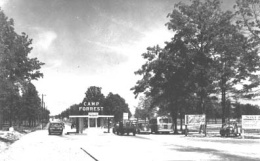 Media
Media
